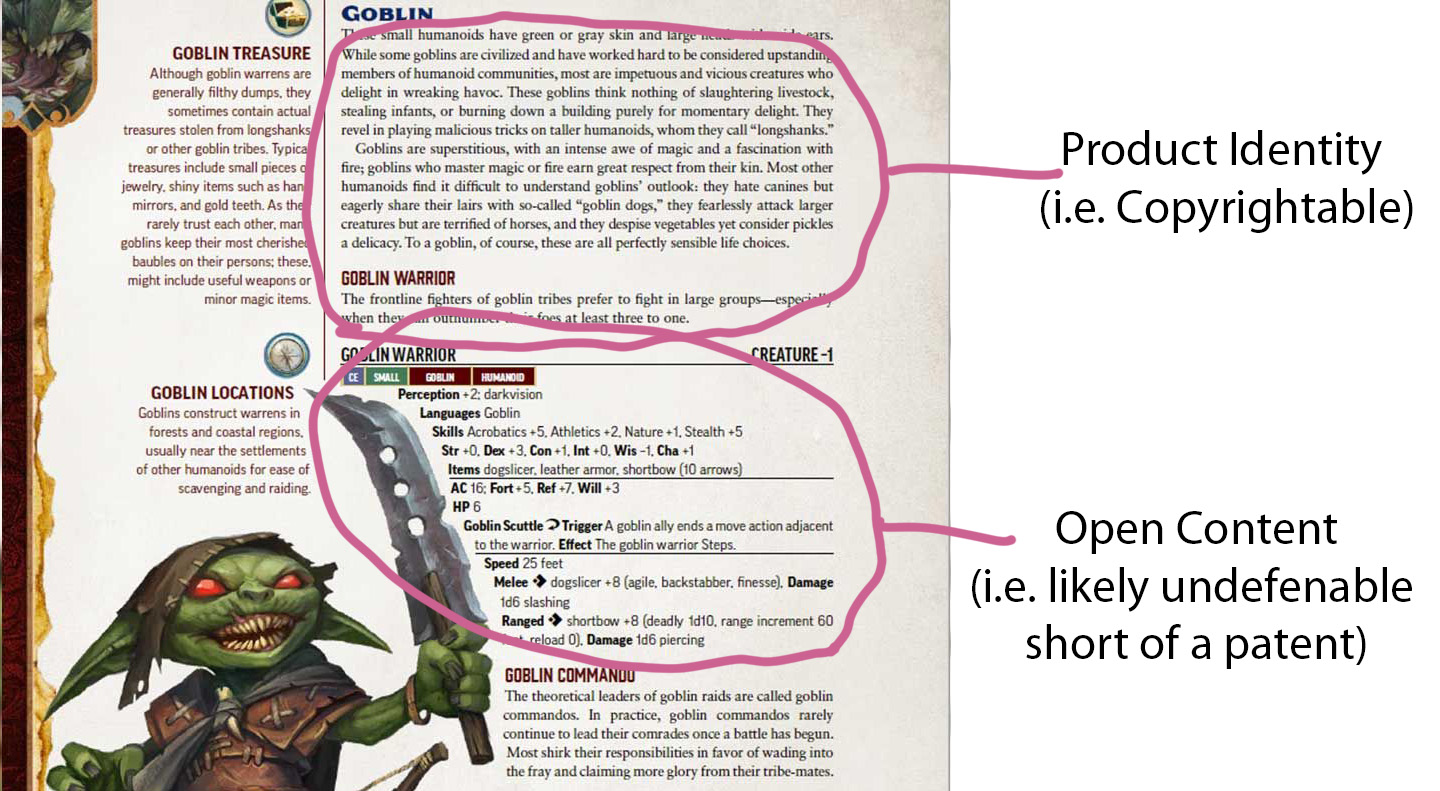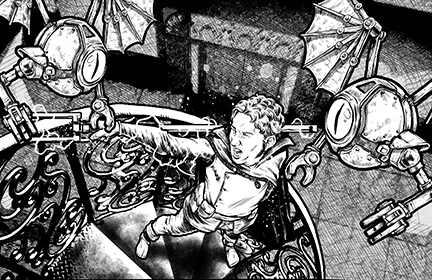A couple weekends ago, I participated in Autumn Revel. It was a fun little virtual convention put on by the folks who run Gary Con. Like other events put together by those folks, many events were using older editions of the game or homages to those systems and adventures; Lots of OSR play. I think that’s what the kids are saying. I had some enjoyable play experiences and excellent conversations on a variety of old school subjects. After one of the events, my brain just wants to wash a bit in that warm glow of nostalgia, which typically has me going down some classic adventure rabbit hole sometime during the next week.
This time it’s B4: The Lost City by Tom Moldvay.
My intentions were pure. The ladies of the household have been asking for some tabletop RPG play. While I started a Pathfinder Second Edition run of Temple of Elemental Evil roughly a year ago, the pandemic changes priorities and life rhythms. The game was abandoned to stay stocked with toilet paper, cat food, and people food. Living rooms became home offices and classrooms. Even without that disruption, I was starting to feel there were better adventure choices for this particular group—something with mysteries a little less esoteric and with more obvious plot points. I also want something a bit focused. Sandboxes breeds indecision in this particular group. Not a railroad, but focused.
My memory told me that The Lost City was worth looking into. I remembered a fun dungeon with a bit of intrigue and a bad-ass bad guy at the end. That and I remembered the art. I always remember the art. I was already working on the last blog and knew I would pull it out of the archives to research table number and level spans in early adventures. I may as well reacquaint myself with this classic.
I know it has been one of the earliest adventures in my collection. I’m pretty sure I got my grubby mitts on a copy of it before I moved from the Bay Area to New York City in the early 80s. I think I ran it once during a sleepover or a party or something. I know I mined it for traps for years. I loved its traps, but I probably haven’t cracked it open for at least a decade. I was a tad trepidatious. Memory is a horrible mistress, and I’ve become critical in my old age.
Spoiler alert. I’m going to talk about the adventure.
There is both fun and madness within this module. First off, it has a great opening. You are traveling across a desert with a caravan. A sandstorm hits, and you get separated. By the time the storm calms, the caravan is gone, and the desert landscape has been shifted by the wind. The only thing to do is head toward the caravan’s last heading. You don’t find the caravan or the desert’s edge but, instead, stumble upon ancient ruins poking out from the sands. This includes a step-pyramid acting as a pedestal for statues of three unknown gods. Near the top of that pyramid is a secret door leading inside propped open by a dead hobgoblin. Food and water are dwindling; there is no other structure for miles. Maybe there’s a bar inside.
No bar, but there’s a gambling hall and a dancing room.
There is a lot of crazy in this adventure. Some of it is pure madcap. Some of it is raw chaos.
Let’s start with some chaos. One of the things this adventure is known for is the abundance of maps. The core of the adventure runs five levels of the step-pyramid and is contained in 58 rooms. The expanded adventure inverts the pyramid another five levels under the earth and provides passage to a cavern with a sizeable underground lake, a hidden city, volcanism, and caverns. Overall, the adventure has 100 rooms, sans the areas outlined in the cavern and the city. It’s 32 pages is chocked full of adventure. It’s complicated.
It’s obviously an homage to the pulpy stories of Robert E Howard. The big bad is a little Rob and a little bit Lovecraft and tailor-made for a Frazetta-style pulp cover. That’s not a criticism. I love that shit.
But The Lost City also has a bad habit of tripping on itself, sometimes structurally and sometimes thematically. I’ll give a few examples. Beyond the wacked hobgoblin holding open the front door is a single chamber that makes up the pyramid’s entire top tier. From there, there’s only one way to go—down. Which leads you to area 6 on the second tier. Area 2 is a junk room. Area 3 is a secret chamber you may or may not find. Area 4 has a dead body. Area 5 has some sprites and fireworks. Two of those areas are one door away from the entry chamber; the others are farther or someway out of reach. This may seem like a nit-pick (and in some ways it is), but such transitional craziness, along with at least a couple of mislabeled areas, makes it difficult for a GM to piece together the likely flow of the adventure. Hell, it had me making copies and digging out my highlighters. Keep in mind, this is an adventure for new players and like new Dungeon Masters. I would have preferred it took pains to make that job a little easier for younger me.
The chaos continues when it comes to monster choice and chambers’ contents secondary to the adventure’s main plot. Let’s take a brief look at some of the critters in the second tier. Aside from the significant players are fire beetles, sprites, stirges, a large puddle of green slime, a gecko, and a hive of killer bees. Keep in mind this thing has been buried for a long time. I don’t imagine these critters are native to the subterranean cave, and there is no random monster generator anywhere nearby. More than likely, they were just convenient challenges plopped in for…whatever reason. Using only the monsters introduced in this adventure (there are four—banshee, Cynidiceans, werefox, and polymer) and those in the Moldvay basic set, I imagine some of this is just the need to fill up rooms with a limited bestiary. And let’s face it, some folks find such randomness in encounters within classic adventures charming. It has me in the mood for revisions. I like the big questions: Why are we here? What is our purpose? What the fuck are we doing? Because if I don’t ask them, you can bet my players will.
In short, there are large swaths of this thing that are messy and just downright strange to the modern eye. They might have been back then too, I don’t remember why I didn’t run this thing more than once. I may have just had a hard time wrapping my head around the strangeness.
That said, there is an undercurrent of unadulterated awesome within the jumble.
There is potential succor under the sands. Generations ago, a group of refugees from the city above fled to the caverns below the ziggurat. They’ve been there so long they’ve developed pale skin and hair and possess infravision (that’s a kind of Darkvision from earlier editions of the game). Most of these folks, the Cynidiceans, live under the tyranny of that Howardian-Lovecraftian critter responsible for the fall of the surface civilization, destined to a meal for their supposed god. But there are three other factions—those who revere the older gods—who want to make their civilization great again. Like all such movements, each faction has rules that discriminate against those based on race and class or feature a narcissistic, craven leader. They have strange rituals, weird practices, crazy costumes, and often don’t seem to be a lick of sense, but you can join these fringe groups and gain (well, Maslow’s hierarchy comes first—food and water) aid, protection, and intelligence about tiers and caverns amid the ruins. It’s a weird, decadent culture, clearly on the brink of utter demise. It’s sort of a mix of Midsommar and Eyes Wide Shut.
The adventure’s core involves navigating the dangers and the strange politics, an aside that may involve looting and cleansing a burial chamber for the last and greatest king and queen of the surface civilization. (Imagine you fuck up an entire advanced kingdom, and somehow you are still their greatest monarchs. What the fuck did the last guys do?) And then culminating in a bit of possession and undying sibling rivalry.
It’s weird, but it has a lot of potential. I found that there were reasons why this adventure had haunted my memories but yielded few rereads.
In the end, I think the love of The Lost City has a lot to do with the premise, its undercurrents, and the fact that it crammed so much content within 32 pages and it had pages and pages of maps. It’s both ambitious and half-ass, fulfilling and frustrating. There is so much potential encrusted by a layer of flakey cruft.
I am not going to run The Lost City. Instead, I will take the main themes of the adventure—the broad strokes—and redesign it tier by tier.
Delving For Yourself
If you’re interested delving into The Lost City, Drive-Thru RPG has the PDF. Goodman Games released The Lost City as its fourth release in their Reincarnated series. That adventure has the original, a 5e conversion, expanded areas and rules for that edition, and commentary on the adventure. I don’t own it and I have not read it.
Dungeon issue 142 features and adventure titled Masque of Dreams by B. Matthew Conklin III. It presents an alternative opening for the adventure, where the PCs get involved with Cynidiceans and their factions earlier in the adventure.
Lastly, the monster Zargon is one of the Elder Evils in the book of the same name by Robert Schwalb. In this 3rd Edition supplement. His chapter an origin story, stats, and a truncated adventure featuring an escaped Zargon and the fourth tier of the ziggarat.









Leave a Reply